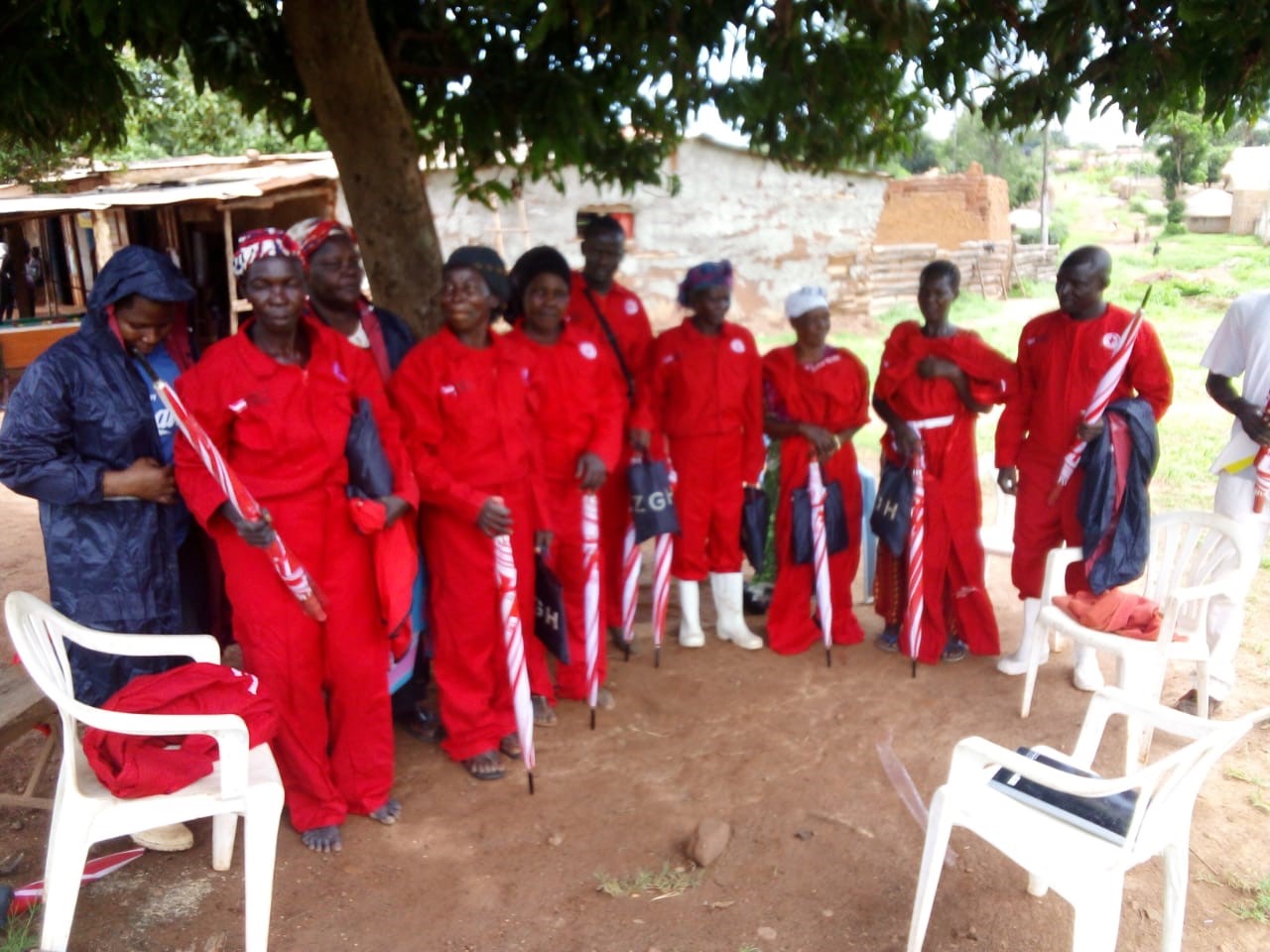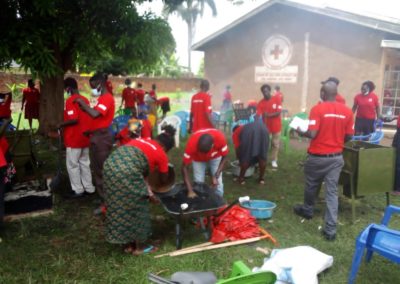Written by George Baliraine, focal person for the Skybird micro project at Uganda Red Cross Society HQ level
Background
Gulu City is situated in the northern part of Uganda, with an estimated population of 1.2 million.
The northern region was embroiled in instability for over 20years (from the late 1980s to 2000). The region was affected economically, socially and security wise. During the 20years of insurgence, there was very limited or no development at all in the region. All government programs were brought to a standstill, infrastructure development was pulled and human suffering was the order of the day.
Population movement in the morning to access gardens and in the evening coming back to secure places was a daily practice. This was called night commuters, where children and mostly women were seen sleeping on the verandah of the would-be shops. Poor waste disposal for both domestic and human waste was the order of the day due to the increasing number of population movement.
Heaps of garbage littered the entire Gulu town and other urban areas.
In 2014, URCS started a 2 year project with funding and support from the American Red Cross, which focused on urban Disaster Risk Reduction (DRR). During this project, the Community-based DRR groups which are still part of the current Skybird micro project, were established. Amidst the implementatin of this project, it was also discovered that Gulu City is choked by poor waste management, in public markets as well as at household level. Poor attitude, a lack of knowledge and lack of resources by Gulu City council authorities to respond to the identified problems were among the identified challenges.
Enter the Skybird micro project
Building on the structures of the DRR project, the Skybird micro project introduced and Urban WASH project to Gulu City. The project team centered the activities around waste management in Gulu center, with an objective of converting waste – a valubable resource – into tangible and useful forms like fertilizers or green energy by making environmentally friendly briquettes. Those activities are also in a position to result into business opportunities for the women centered DRR groups since they could produce and sell the products derived from waste.

In the beginning, the existing CBDRR groups had to be reactivated and some new members had to be selected at Community Engagement and Accountability (CEA) forums. As mentioned above, the raw materials were not a problem, since a number of slum areas within the city were choked with garbage.
Designed to empower communities, the project team embarked on trainings in business management, green energy (Briquettes making and production of fertilizers/manure). After a 5-day training, briquette production machines and other equipment was handed over to the groups.
The production of briquettes gradually commenced and by closure of the project, over 8900 briquettes were produced with 3120 sold and money left in the hands of the groups with the advise to open up group bank accounts.
Positive Observations
- The beauty with the project is that it highlighted the beneficiaries sense of understanding that garbage is a resource that can be utilized to save energy and generate an income at a low investment cost.
- It was acknowledged that environment littered with garbage is a disaster to human life, animals and plants hence, people should have knowledge on waste management to protect their health and environment.
- The project duration is only one year and while behavior change takes a long time, some changes in attitudes could be observed. For example, the project team organized regular environmental clean-up events. In the beginning, it was difficult to assemble a group of 30 people. Those participating also used to ask for compensation. Towards the end, more and more people were motivated to participate in the clean-ups without asking for a financial compensation.
- It was also observed that the members of the CBDRR groups started to become role models by properly disposing of waste at household level as well as in public places. At HH level all CBDRR members constructed their own waste disposal pits. Towards the end of the project, it was noticed that other community members outside of the CBDRR groups took up the practice and started with proper waste collection and disposal, with some also constructing their own waste disposal pits at HH level. All of this is also attributed to continues engagement, mobilization and awareness raising by the project team and URCS volunteers.
*Click on the images below to view in full size
Short Comings
-
The COVID19 pandemic affected the project/business activities as most of them were not implemented as scheduled
- Community attitude towards the project, especially waste management is thought to be a responsibility of Gulu City council authorities since they pay monthly taxes. This created an obstacle to the desired behavior change.
- Marketing was and still is a problem as most of the targeted population of urban dwellers still prefer to use the traditional charcoal from logs of trees and firewood at lower prices.
- Poor knowledge, attitude and practice by the targeted beneficiaries, eventhough small changes could be observed.
- The project time span and the time needed for initial set up is very short considering the aim of changing long established behaviors.
Recommendations
- Integration of activities like Hygiene Promotion, CEA, and protection, gender and inclusion will create a leeway to improved community participation.
- More research needs to be conducted especially on marketing opportunities, linking the groups producing green energy to other sectors like police, prison, schools and other government institutions that use a lot of fire wood. At the same time advocate with the institutions to use the briquettes as energy source.
- Invest a lot in community trainings in green energy, its values to the environment and establish CEA committees at all relevant levels.
In a nutshell…
…with the increasing number of environment-related challenges, briquettes production or green energy is one of the best ways to go in the herementioned context since the raw materials are available and the market is within reach of the nearby or targeted population. Hence more investment and advocacy is needed to create awareness about innovative green energy solutions at all levels.




